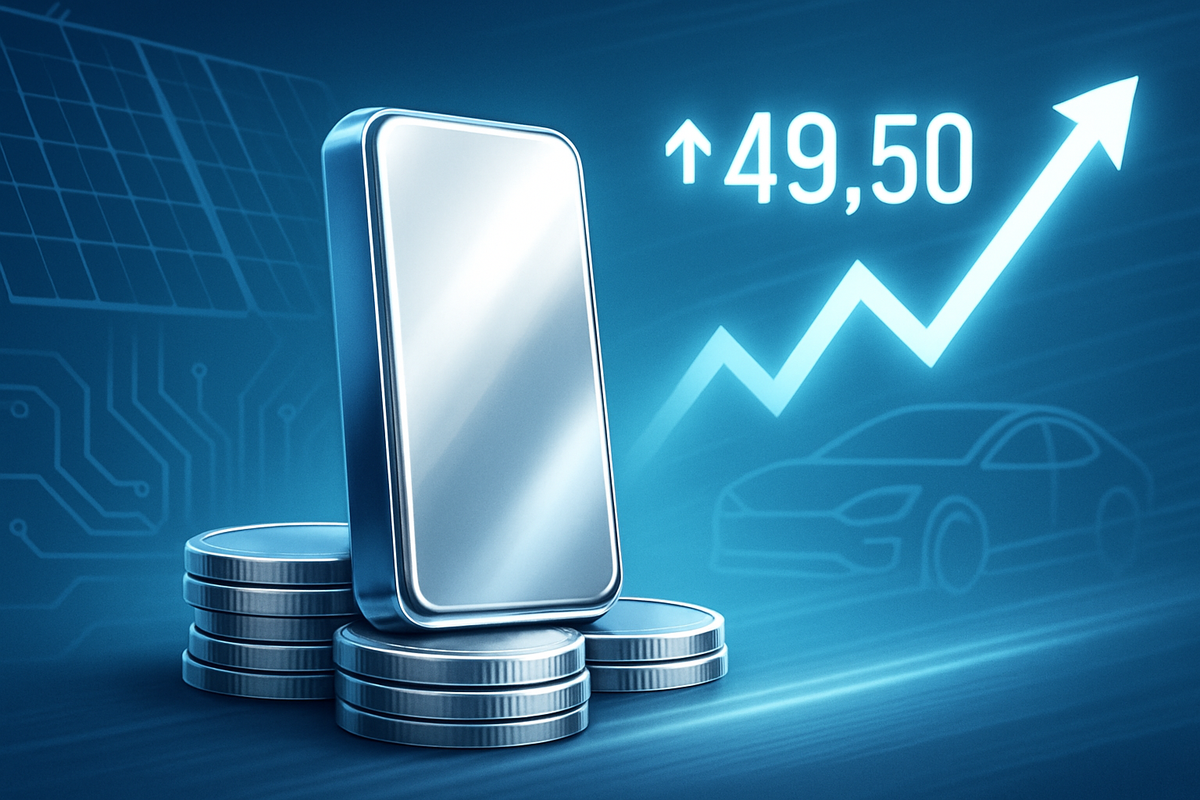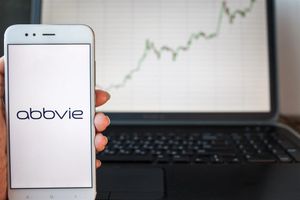
The precious metals market is ablaze, with silver leading a spectacular charge that has brought it to the precipice of a historic milestone: the $50 per ounce mark. As of early October 2025, silver prices have surged, driven by a powerful confluence of escalating global economic uncertainties and an unprecedented surge in industrial demand, particularly from the burgeoning green energy sector. This rally, which has seen silver outperform even gold in some metrics, carries significant implications for investors, industries, and the broader financial landscape, hinting at a potential paradigm shift in the valuation of this versatile metal.
The current rally is not merely speculative; it is underpinned by robust fundamentals. Persistent supply deficits, now stretching into their seventh consecutive year, are meeting record-breaking demand from solar panel manufacturers, electric vehicle producers, and advanced electronics. This dual-pronged pressure has propelled silver to levels not seen in decades, surpassing its 1980 record and placing it within striking distance of the psychological and historical ceiling of $50, a move that could unlock further significant gains and reshape market expectations for silver's future trajectory.
Silver's Ascent: A Detailed Account of the Current Rally
The first week of October 2025 has been nothing short of electrifying for silver. Spot silver prices have been hovering around the $48.65 to $49.55 per ounce range, with a notable jump of 3.4% on October 8, pushing it to $49.55 and, according to some reports, surpassing its 1980 record high. December delivery silver futures (MCX: SILVERDEC25) also mirrored this strength, gaining 3.2% to $49.20 per ounce in New York and reaching an all-time high of ₹1,49,138 per kilogram in India. This remarkable ascent signifies a year-to-date gain of over 60%, with some analyses even placing it above 65%, underscoring the exceptional momentum currently gripping the market.
This extraordinary rally has been building throughout 2025, largely riding the coattails of gold's (COMEX: GC=F) own historic bull run, which saw the yellow metal breach the $3,000 and then $4,000 per ounce barriers. However, silver's performance is further bolstered by its unique position as both a monetary metal and a critical industrial commodity. The timeline of events leading to this moment includes a persistent global supply deficit in silver, which has now lasted for seven consecutive years. This structural imbalance has been exacerbated by a significant decline in global mine production—approximately 7% since 2016—while industrial demand continues to soar, creating a potent recipe for price appreciation.
Key players and stakeholders involved in this surge include a diverse group. Investors seeking a safe haven amidst global economic uncertainties and geopolitical tensions are flocking to silver, much like gold. Exchange-Traded Funds (ETFs) have seen substantial inflows, with net inflows into silver ETPs reaching 95 million ounces in the first half of 2025, exceeding the total for all of 2024. Industrial consumers, particularly those in the solar energy, electric vehicle, and electronics sectors, are also critical players, with their demand projected to account for 59% of total silver demand in 2025. Miners, on the supply side, are struggling to keep pace, contributing to the deficit. The initial market reactions have been overwhelmingly bullish, with many analysts predicting silver will not only test but firmly establish itself above the $50 mark in the near term, prompting discussions about potential buying opportunities on corrections while cautioning against short-selling in such a strong uptrend.
Corporate Fortunes: Winners and Losers in Silver's Surge
The dramatic acceleration in silver prices creates a clear dichotomy in the corporate world: a boon for mining companies and a potential headwind for industries heavily reliant on the metal as a raw material. For publicly traded silver miners, this rally translates directly into enhanced revenue, improved profit margins, and stronger cash flows, enabling greater investment in exploration and operational expansion. Conversely, companies in the electronics, solar, and automotive sectors, which depend on silver's unique properties, face escalating production costs that could squeeze their profitability.
Among the clear beneficiaries are primary silver producers. Companies like Hecla Mining Company (NYSE: HL), with significant operations in the U.S. such as the Lucky Friday and Greens Creek mines, will see a direct uplift in their top-line revenue and overall profitability. Similarly, Pan American Silver Corp (NASDAQ: PAAS), a major operator across the Americas, and Fresnillo plc (LON: FRES), a dominant silver producer in Mexico, stand to gain substantially from higher per-ounce prices for their output. Even streaming companies like Wheaton Precious Metals Corp (NYSE: WPM), which purchase silver streams from miners, will see the value of their acquired precious metal assets appreciate, bolstering their financial performance. These companies are likely to experience increased investor interest and potentially higher valuations as the market prices in their improved earnings outlook.
However, the picture is less rosy for industries where silver is a critical, often irreplaceable, component. The electronics sector, a voracious consumer of silver in circuit boards, connectors, and switches, will feel the pinch. Global giants like Samsung Electronics Co., Ltd. (KRX: 005930) and LG Electronics Inc. (KRX: 066570), whose vast product portfolios from smartphones to home appliances utilize significant amounts of silver, will face rising material costs. Similarly, the burgeoning solar industry, which relies on silver for photovoltaic panels, will see its manufacturing expenses climb. Major players such as First Solar, Inc. (NASDAQ: FSLR) and JinkoSolar Holding Co., Ltd. (NYSE: JKS), leading solar module manufacturers, could experience pressure on their cost competitiveness and profit margins unless they can pass on these increased costs or find innovative ways to reduce silver usage.
Even the automotive industry, particularly with the accelerating shift towards electric vehicles (EVs), is exposed. Silver's high electrical conductivity makes it essential for various electrical contacts and systems within vehicles. Companies like General Motors Company (NYSE: GM), heavily invested in EV production, will find that rising silver prices contribute to higher manufacturing costs for their vehicles. While these industries may explore material substitution or efficiency gains, silver's superior properties often make it difficult to replace in high-performance applications, forcing companies to absorb higher costs or adjust their pricing strategies, which could impact their market share and competitive standing.
Wider Significance: A New Era for the White Metal
Silver's current rally, particularly as observed on October 8, 2025, extends far beyond mere price fluctuations; it signals a profound shift in the metal's role within the global economy and aligns with several overarching industry trends. This surge is not solely a response to inflation fears or safe-haven demand, but is structurally supported by the accelerating global green energy transition, positioning silver as an indispensable industrial commodity alongside its traditional monetary status.
The most significant broader industry trend underpinning silver's ascent is the aggressive push towards renewable energy and electrification. Silver is a critical component in photovoltaic (PV) solar panels, where it accounts for a substantial portion of manufacturing costs, and in electric vehicles (EVs), where its superior conductivity is vital for battery management systems, power inverters, and numerous electronic components. The expansion of 5G infrastructure and advanced computing further solidifies silver's industrial demand. This structural demand, coupled with persistent supply deficits—now in their fifth consecutive year as demand continues to outpace production—creates a powerful long-term tailwind. Unlike previous rallies, this one is characterized by a fundamental demand-supply imbalance driven by technological evolution, rather than being purely speculative.
The ripple effects of a sustained silver rally are significant. Solar panel manufacturers are already actively researching "silver reduction" technologies and exploring alternative materials to mitigate rising input costs. While substitution is challenging due to silver's unique properties, a continued price surge could accelerate innovation in this area. Similarly, the electronics and automotive industries will face increased production costs, potentially leading to higher consumer prices for devices and vehicles. For mining companies, while profitability soars, the inherent inflexibility of silver supply—as 72% is a byproduct of other metal mining—means a rapid increase in production to meet demand is unlikely, prolonging the supply deficit. This also creates opportunities for precious metal refiners and dealers, who will see increased activity from both investors and industrial users.
From a regulatory and policy standpoint, the rally could prompt nations to consider silver a "critical mineral," potentially leading to the establishment of strategic reserves, as seen with China. Trade policies, environmental regulations in mining regions, and monetary policy decisions by central banks will all continue to exert influence. Historically, sharp silver rallies, such as the 1970s boom driven by inflation and speculative activity (e.g., the Hunt Brothers) and the 2011 spike fueled by monetary inflation concerns, offer parallels. However, the current rally distinguishes itself by the robust and structural industrial demand from green technologies, suggesting it could be part of a new "commodity supercycle" driven by global decarbonization efforts and underinvestment in supply, which could sustain elevated prices for years to come.
The Road Ahead: Navigating Silver's Future
The accelerating rally of silver, pushing it to the brink of the historic $50 per ounce mark as of October 8, 2025, sets the stage for a dynamic and potentially transformative period for the precious metal. Both short-term fluctuations and long-term structural shifts suggest a broadly bullish trajectory, necessitating strategic pivots across various industries and presenting both opportunities and challenges for market participants.
In the short term (the next 6-12 months), the consensus among analysts remains overwhelmingly optimistic. Forecasts from institutions like HSBC project silver to surpass its 2011 record high of nearly $50 per ounce, potentially trading in the $45-$53 range for the remainder of 2025 and $40-$55 in 2026. This is driven by continued robust industrial demand from green technologies, anticipated interest rate cuts by central banks reducing the opportunity cost of holding non-yielding assets, persistent supply constraints, ongoing geopolitical uncertainties bolstering safe-haven demand, and the gravitational pull from gold's record rally. The immediate challenge will be to clear the psychological $50 barrier, which, if achieved, could trigger further momentum into uncharted territory.
Looking further ahead (beyond 1-2 years), the long-term outlook for silver is exceptionally strong, underpinned by its indispensable role in the global energy transition. Projections suggest silver could reach $75 per ounce by the end of 2026, $100 in 2028, and potentially even $250 by 2037. The solar sector's annual demand for silver is expected to nearly double by 2030, while the automotive sector, especially EVs, could triple its consumption by 2040. The structural supply deficit, exacerbated by declining ore grades and underinvestment in mining, is expected to intensify, creating a sustained upward pressure on prices. This fundamental imbalance, coupled with growing investment demand from central banks and institutional investors, positions silver for a prolonged period of appreciation.
Industries heavily reliant on silver will need to implement significant strategic adaptations. Manufacturers in electronics, solar, and automotive sectors are already engaged in strategic stockpiling, securing long-term supply contracts, and investing in "thrifting" technologies to reduce silver content per unit. Accelerated research and development into silver recycling from end-of-life products and exploring alternative materials will also be crucial, despite the performance challenges of substitution. Mining companies, while benefiting from higher prices, face the challenge of increasing supply in a capital-intensive, multi-year endeavor, often constrained by silver being a byproduct of other metal mining. Market opportunities will abound in green technology investment, advanced electronics, recycling solutions, and silver mining equities, while challenges will include exacerbated supply shortages, price volatility, and geopolitical risks to supply chains. The most probable scenario is a "Green Revolution" driven by sustained appreciation, potentially pushing silver well above $100 per ounce in the long term, making it a pivotal commodity in the global decarbonization effort.
Wrap-up: Silver's Enduring Impact and Investor Outlook
Silver's accelerating rally towards the $50 per ounce mark in October 2025 marks a pivotal moment, highlighting its dual identity as both a safe-haven asset and a critical industrial metal essential for the future economy. The key takeaway is that this rally is not a fleeting speculative bubble but is underpinned by robust, structural demand from the green energy transition and persistent supply deficits, creating a fundamentally bullish environment for the white metal.
Moving forward, the silver market is poised for continued dynamism. The confluence of global economic uncertainties, geopolitical tensions, and an insatiable industrial appetite from sectors like solar, electric vehicles, and advanced electronics suggests that silver's upward trajectory is likely to persist. The metal's relatively smaller market size compared to gold also means that significant capital inflows can have an outsized impact on price, potentially leading to increased volatility but also substantial gains.
The lasting impact of this event will be a re-evaluation of silver's strategic importance. Governments may increasingly classify it as a critical mineral, leading to policies aimed at securing supply chains and promoting domestic recycling. Industries will be compelled to innovate, finding ways to maximize silver efficiency or develop viable alternatives, while investors will increasingly recognize silver's potential for both capital appreciation and portfolio diversification.
Investors should watch for several key indicators in the coming months. Continued inflows into silver ETFs and physical bullion, further advancements in green energy policies, and any significant shifts in global monetary policy will be crucial. Monitoring the supply-demand balance, particularly mine production figures and industrial consumption trends, will provide insights into the sustainability of the rally. While the allure of quick gains is strong, a long-term perspective, recognizing silver's foundational role in the evolving global economy, will be paramount for navigating this exciting, yet potentially volatile, market.
This content is intended for informational purposes only and is not financial advice





